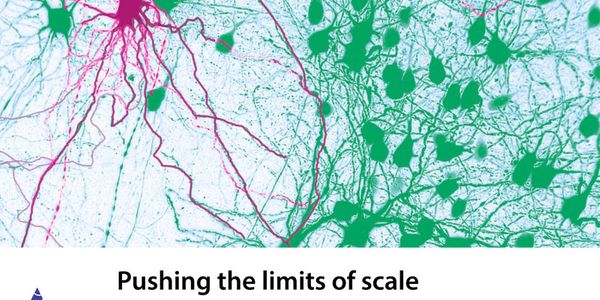Complex Disease
Caused by genetic, environmental, and lifestyle factors, complex diseases such as asthma, diabetes, epilepsy, hypertension, manic depression, schizophrenia, and others, are often difficult to treat. Disorders that are commonly referenced as "running in the family" can be classified as complex diseases.
-
SEP 09, 2020 | 12:00 AMOver the last several decades, antibodies (Abs) have become a valuable weapon in the fight against viral infections, with several studies demonstrating the importance of both neutralizing an...SEP 09, 2020 | 12:00 AMTraditionally, virology has been focused in studying the pathogenic effect of viruses. In the recent years, however, this perception is changing and viruses are being studied as mutualistic...SEP 09, 2020 | 12:00 AMThe regions of our genome responsible for encoding the genes that regulate our immune response are some of the most complex and polymorphic known. This complexity encompasses multiple types...SEP 09, 2020 | 12:00 AMThe statement by Dimitri Ivanovsky in 1882 that "the sap of leaves infected with tobacco mosaic disease retains its infectious properties even after filtration through Chamberland filte...SEP 09, 2020 | 12:00 AMProkaryotic DNA contains three types of methylation: N6-methyladenine, N4-methylcytosine and 5-methylcytosine. The lack of tools to analyse the frequency and distribution of methylated resid...SEP 09, 2020 | 12:00 AMTo establish productive infection, plant viruses need to be able to efficiently invade and spread within a plant. Most viruses are introduced into a plant via the epidermal or mesophyll cell...SEP 09, 2020 | 12:00 AMHuman chromosome 19q13.4 contains genes encoding killer-cell immunoglobulin-like receptors (KIR). The region has certain properties such as single nucleotide variation, structural variation,...SEP 08, 2020 | 11:00 PMMost currently used conventional influenza vaccines are based on 1940s technology. Advances in immunogen design and vaccine delivery emerging over the last decade open novel opportunities fo...SEP 08, 2020 | 11:00 PMThe receptor binding domain (RBD) of the SARS-CoV-2 spike glycoprotein mediates viral attachment to ACE2 receptor, and is a major determinant of host range and a dominant target of neutraliz...SEP 08, 2020 | 11:00 PMThe recent outbreak of SARS-CoV-2 underscores the need for understanding the evolutionary processes that drive the emergence and adaptation of zoonotic viruses in humans. Here, we show that...SEP 08, 2020 | 11:00 PMOver the past five years there has been an explosion of research the deep learning field. Companies like Google, Facebook, and OpenAI have created neural networks that are significantly more...SEP 08, 2020 | 11:00 PMWhile viral fusion proteins are highly desirable for subunit vaccine generation, their inherent metastable nature complicates implementation and development. We have harnessed the structural...SEP 08, 2020 | 11:00 PMBackground: Haemophilus influenzae is the causative agent of multiple human disease conditions among multiple sites in the human body. Underlying genetic mechanisms are elusive, particularly...SEP 08, 2020 | 12:00 PMWhile the frequency of pandemic threats seems to be increasing, we fortunately have new tools and technologies to make vaccines with more precision and speed and that support a more proactiv...SEP 08, 2020 | 10:00 AMInfluenza infections are initiated by just a handful of virions infecting a handful of cells, so it is important to understand what happens in single infected cells. I will describe work tha...SEP 08, 2020 | 9:00 AMSeasonal and pandemic influenza virus infections can cause significant disease worldwide. Current vaccines only provide limited, short-lived protection, and antigenic drift/shift in the hema...SEP 08, 2020 | 6:00 AMThis webinar covers various fundamental aspects of performing a successful digital PCR (dPCR) assay on the QIAcuity instruments. An essential parameter to consider in designing a dPCR assay...Speaker: Andreas Missel, PhDAUG 07, 2020 | 12:00 PMDuring this seminar I will present details of my path from Beckman Scholar to MD-PhD, advanced training as a neurologist, then a neurointensivist, and the interleaving of additional research...JUL 29, 2020 | 12:00 AMMetastasis is the main cause of death in cancer patients and one of the most complex biological processes in human diseases (Hanahan et al., 2011). The development of therapies designed to f...JUL 28, 2020 | 9:00 AMDATE: July 28, 2020 TIME: 9:00 am PDT, 12:00 pm EDT The demographic profile of hepatitis B and C has seen a paradigm shift over the last 10 years and as a result clinical guidelines for hepa...JUL 09, 2020 | 11:00 AMDATE: July 9, 2020 TIME: 11:00am PT Maladaptive aggression is an immutable force that contributes to the suffering and death of millions of people around the world annually, as well as prese...JUN 30, 2020 | 9:00 AMDATE: June 30, 2020 TIME: 9:00am PDT, 12:00pm EDT QC laboratories perform a critical role in demonstrating pharmaceutical products are consistently manufactured, safe, potent, and pure. At t...JUN 17, 2020 | 1:30 PMUnderstanding the complex interplay between a pathogen and the host response is important to developing effective vaccines and therapeutics. The nCounter® Analysis System and GeoMx®...Speaker: Joseph M. Beechem, PhD , Christopher E. Mason, PhD , Robert Schwartz, PhDJUN 17, 2020 | 12:00 PMThe 2020 pandemic caused by the severe acute respiratory syndrome coronavirus 2 (SARS-CoV-2) continues to rage. While PCR-based assays are used for viral diagnosis, high through-put, rapid s...Speaker: Susan Zolla-Pazner, PhD
SEP 09, 2020 | 12:00 AM
Over the last several decades, antibodies (Abs) have become a valuable weapon in the fight against viral infections, with several studies demonstrating the importance of both neutralizing an...
SEP 09, 2020 | 12:00 AM
Traditionally, virology has been focused in studying the pathogenic effect of viruses. In the recent years, however, this perception is changing and viruses are being studied as mutualistic...
SEP 09, 2020 | 12:00 AM
The regions of our genome responsible for encoding the genes that regulate our immune response are some of the most complex and polymorphic known. This complexity encompasses multiple types...
SEP 09, 2020 | 12:00 AM
The statement by Dimitri Ivanovsky in 1882 that "the sap of leaves infected with tobacco mosaic disease retains its infectious properties even after filtration through Chamberland filte...
SEP 09, 2020 | 12:00 AM
Prokaryotic DNA contains three types of methylation: N6-methyladenine, N4-methylcytosine and 5-methylcytosine. The lack of tools to analyse the frequency and distribution of methylated resid...
SEP 09, 2020 | 12:00 AM
To establish productive infection, plant viruses need to be able to efficiently invade and spread within a plant. Most viruses are introduced into a plant via the epidermal or mesophyll cell...
SEP 09, 2020 | 12:00 AM
Human chromosome 19q13.4 contains genes encoding killer-cell immunoglobulin-like receptors (KIR). The region has certain properties such as single nucleotide variation, structural variation,...
SEP 08, 2020 | 11:00 PM
Most currently used conventional influenza vaccines are based on 1940s technology. Advances in immunogen design and vaccine delivery emerging over the last decade open novel opportunities fo...
SEP 08, 2020 | 11:00 PM
The receptor binding domain (RBD) of the SARS-CoV-2 spike glycoprotein mediates viral attachment to ACE2 receptor, and is a major determinant of host range and a dominant target of neutraliz...
SEP 08, 2020 | 11:00 PM
The recent outbreak of SARS-CoV-2 underscores the need for understanding the evolutionary processes that drive the emergence and adaptation of zoonotic viruses in humans. Here, we show that...
SEP 08, 2020 | 11:00 PM
Over the past five years there has been an explosion of research the deep learning field. Companies like Google, Facebook, and OpenAI have created neural networks that are significantly more...
SEP 08, 2020 | 11:00 PM
While viral fusion proteins are highly desirable for subunit vaccine generation, their inherent metastable nature complicates implementation and development. We have harnessed the structural...
SEP 08, 2020 | 11:00 PM
Background: Haemophilus influenzae is the causative agent of multiple human disease conditions among multiple sites in the human body. Underlying genetic mechanisms are elusive, particularly...
SEP 08, 2020 | 12:00 PM
While the frequency of pandemic threats seems to be increasing, we fortunately have new tools and technologies to make vaccines with more precision and speed and that support a more proactiv...
SEP 08, 2020 | 10:00 AM
Influenza infections are initiated by just a handful of virions infecting a handful of cells, so it is important to understand what happens in single infected cells. I will describe work tha...
SEP 08, 2020 | 9:00 AM
Seasonal and pandemic influenza virus infections can cause significant disease worldwide. Current vaccines only provide limited, short-lived protection, and antigenic drift/shift in the hema...
SEP 08, 2020 | 6:00 AM
This webinar covers various fundamental aspects of performing a successful digital PCR (dPCR) assay on the QIAcuity instruments. An essential parameter to consider in designing a dPCR assay...
Speaker:
Andreas Missel, PhD
AUG 07, 2020 | 12:00 PM
During this seminar I will present details of my path from Beckman Scholar to MD-PhD, advanced training as a neurologist, then a neurointensivist, and the interleaving of additional research...
JUL 29, 2020 | 12:00 AM
Metastasis is the main cause of death in cancer patients and one of the most complex biological processes in human diseases (Hanahan et al., 2011). The development of therapies designed to f...
JUL 28, 2020 | 9:00 AM
DATE: July 28, 2020 TIME: 9:00 am PDT, 12:00 pm EDT The demographic profile of hepatitis B and C has seen a paradigm shift over the last 10 years and as a result clinical guidelines for hepa...
JUL 09, 2020 | 11:00 AM
DATE: July 9, 2020 TIME: 11:00am PT Maladaptive aggression is an immutable force that contributes to the suffering and death of millions of people around the world annually, as well as prese...
JUN 30, 2020 | 9:00 AM
DATE: June 30, 2020 TIME: 9:00am PDT, 12:00pm EDT QC laboratories perform a critical role in demonstrating pharmaceutical products are consistently manufactured, safe, potent, and pure. At t...
JUN 17, 2020 | 1:30 PM
Understanding the complex interplay between a pathogen and the host response is important to developing effective vaccines and therapeutics. The nCounter® Analysis System and GeoMx®...
Speaker:
Joseph M. Beechem, PhD
, Christopher E. Mason, PhD
, Robert Schwartz, PhD
JUN 17, 2020 | 12:00 PM
The 2020 pandemic caused by the severe acute respiratory syndrome coronavirus 2 (SARS-CoV-2) continues to rage. While PCR-based assays are used for viral diagnosis, high through-put, rapid s...
Speaker:
Susan Zolla-Pazner, PhD
























